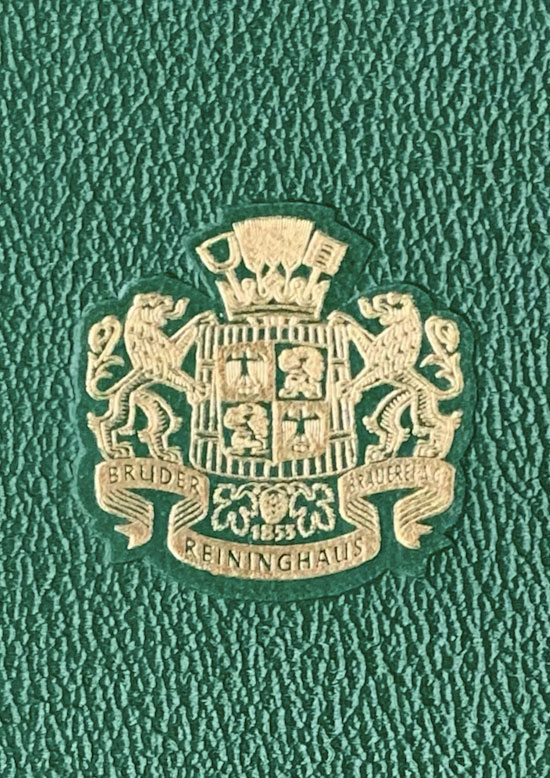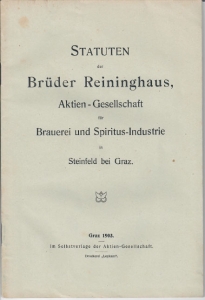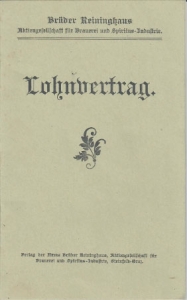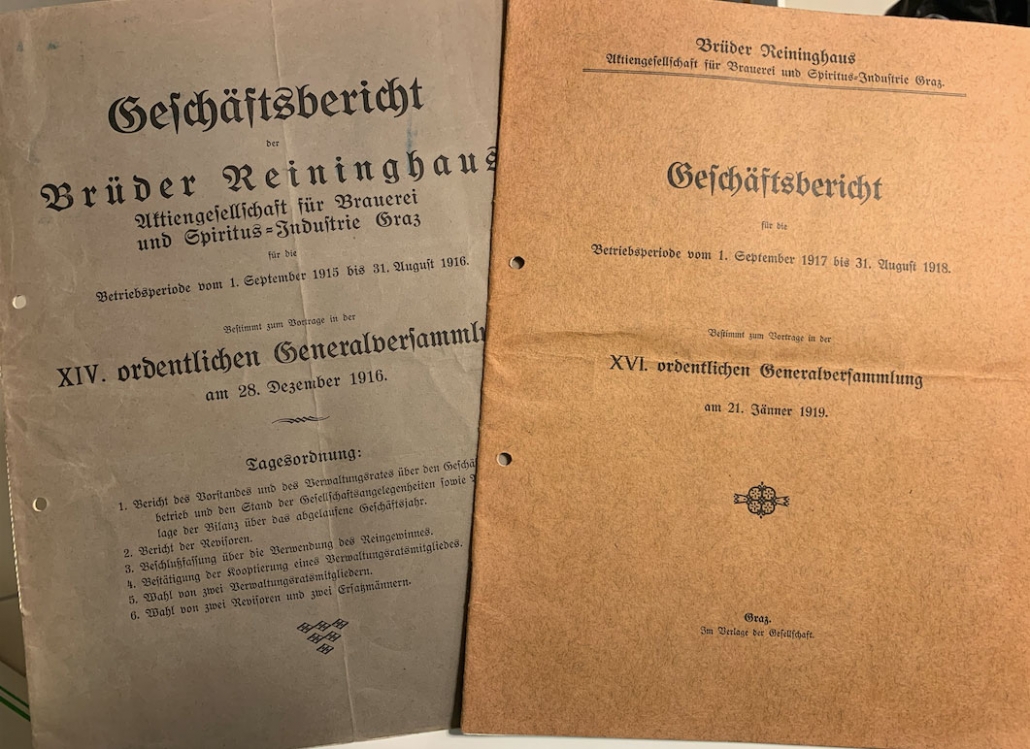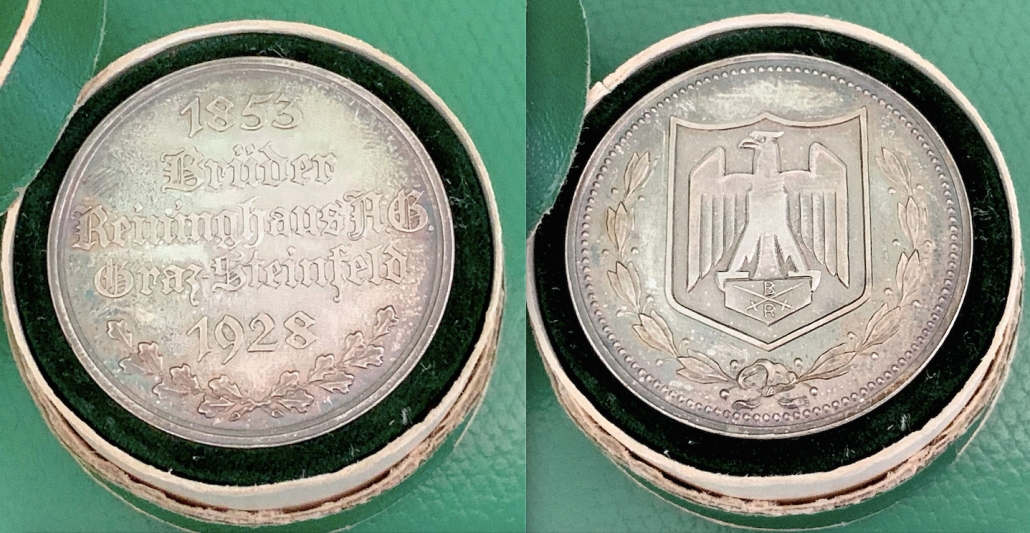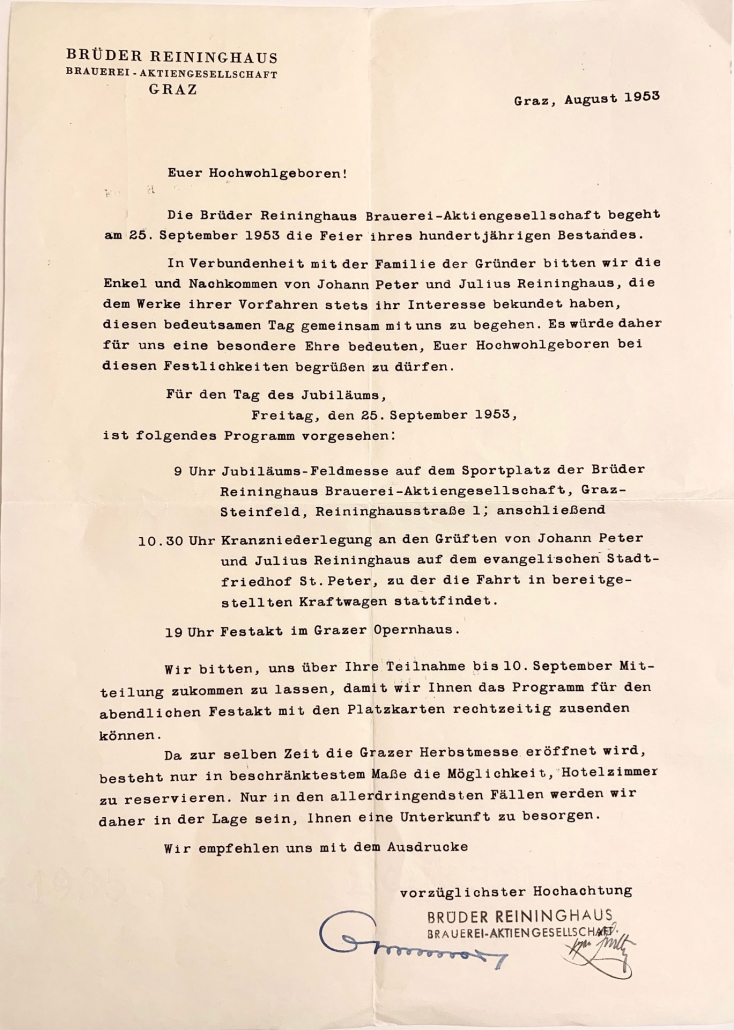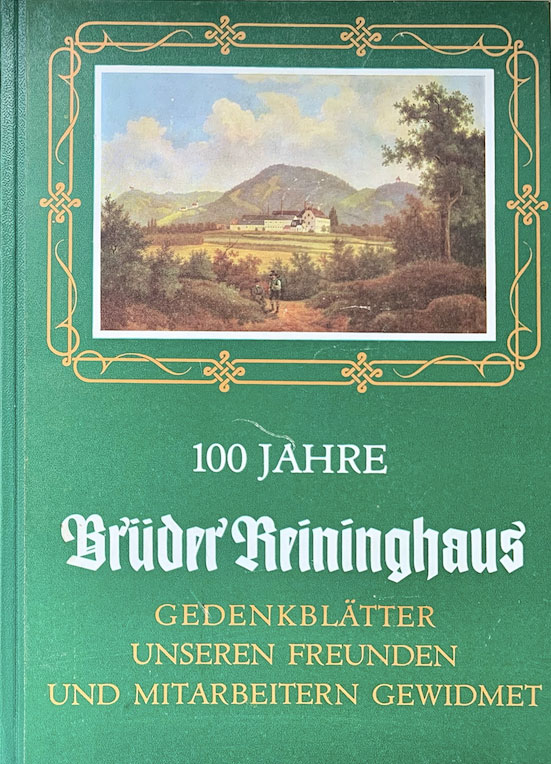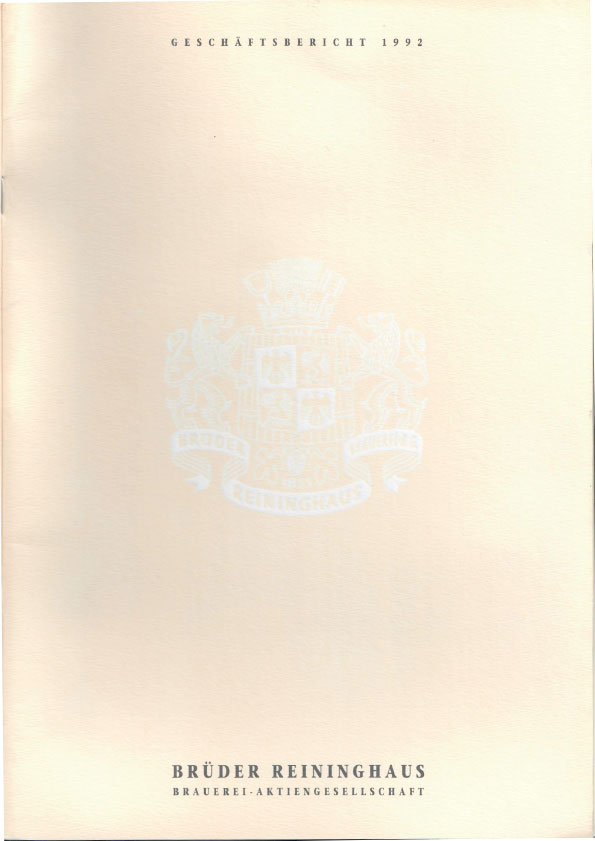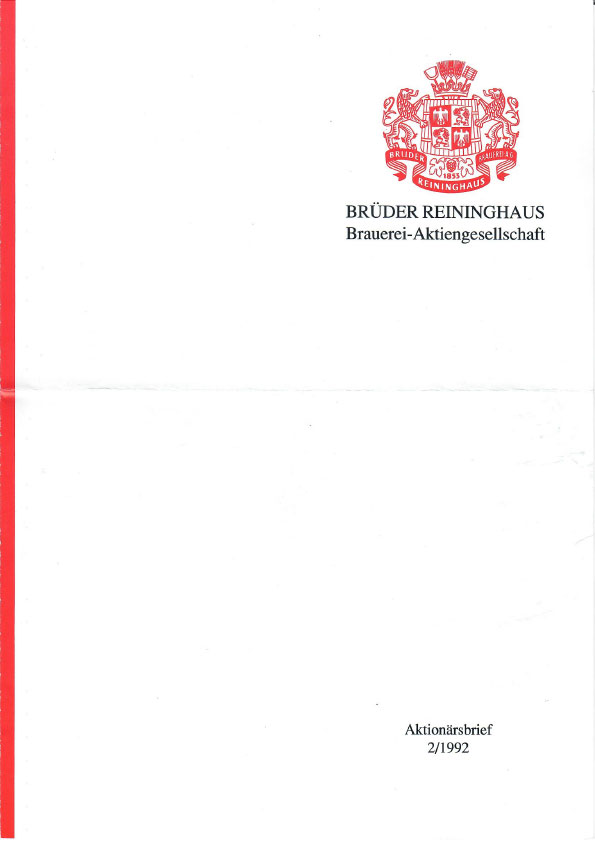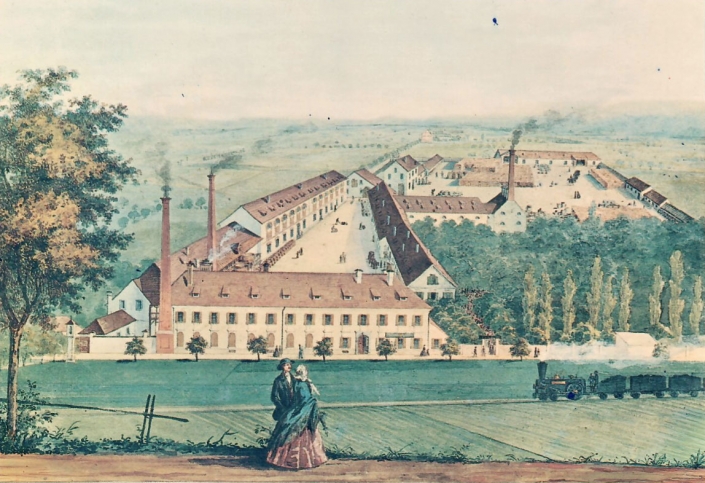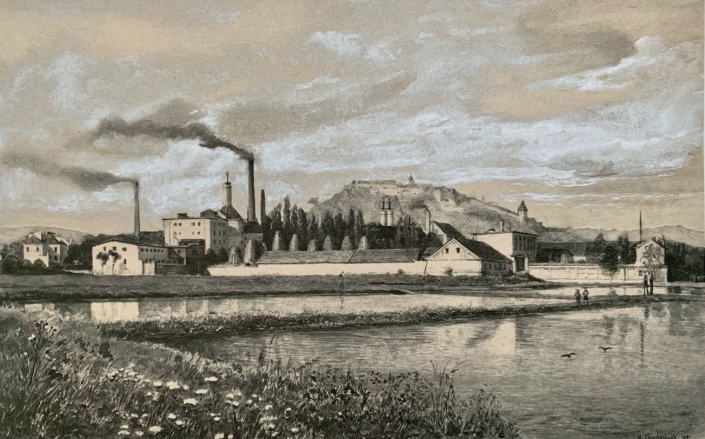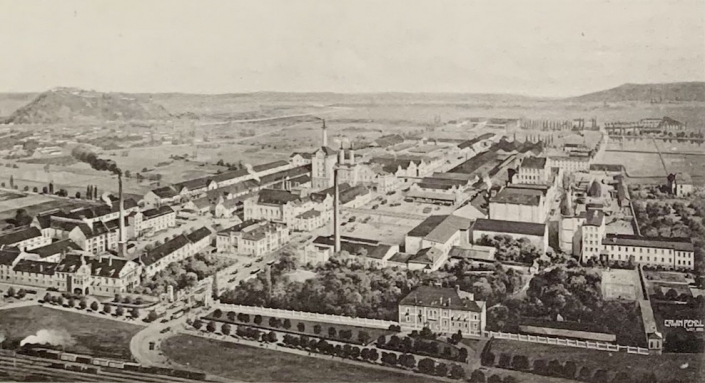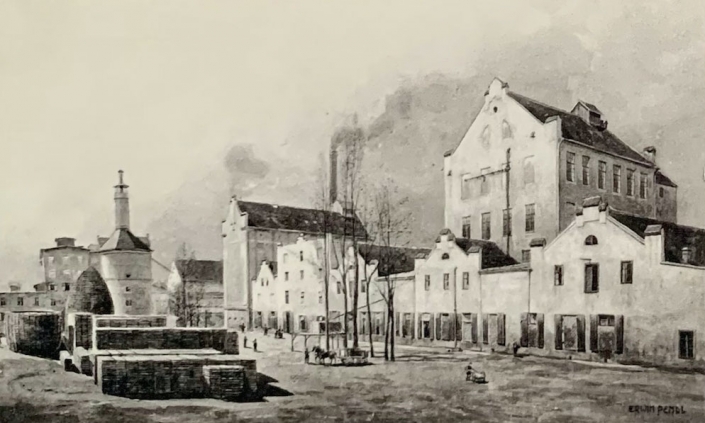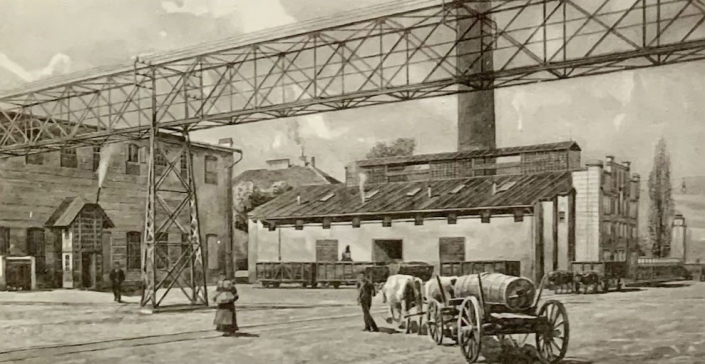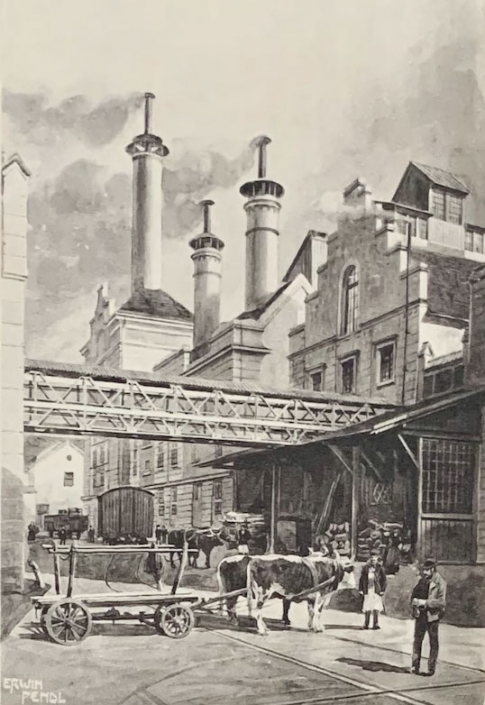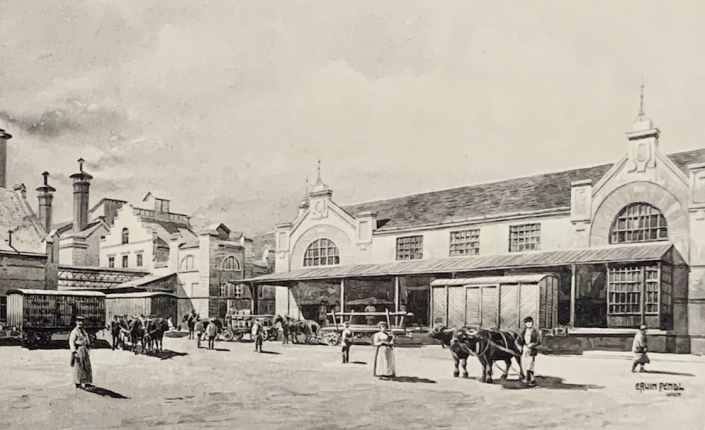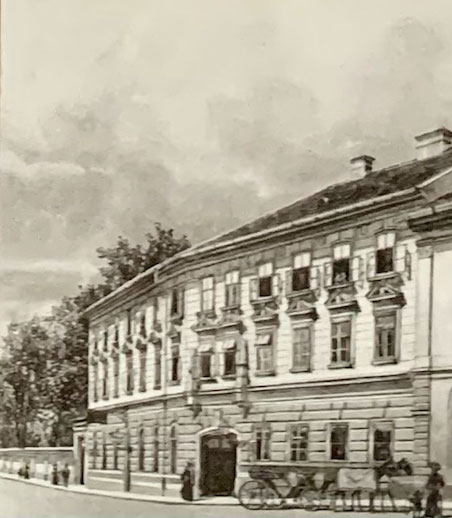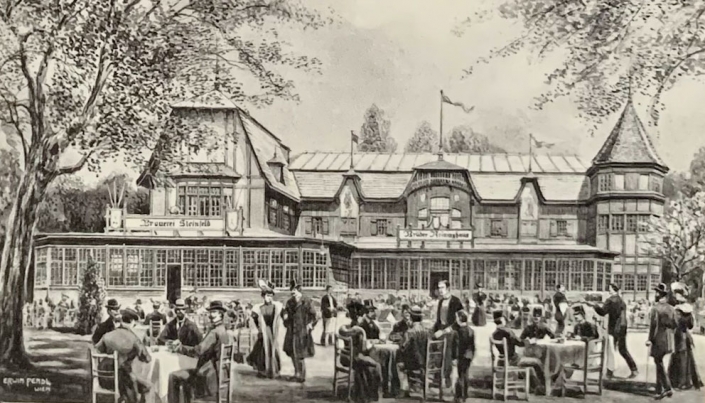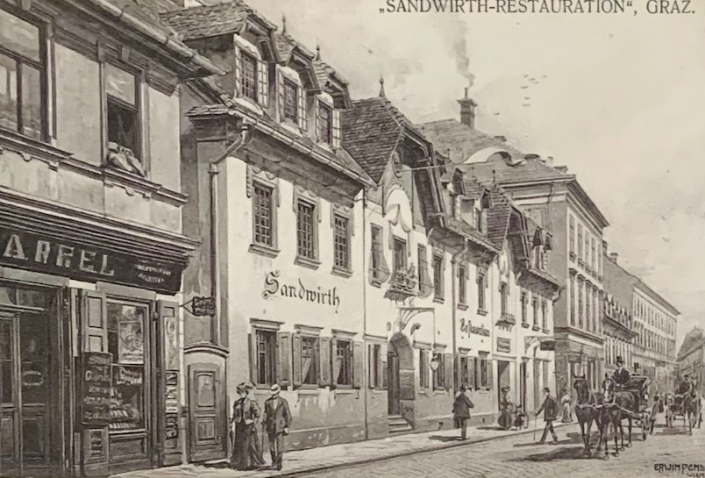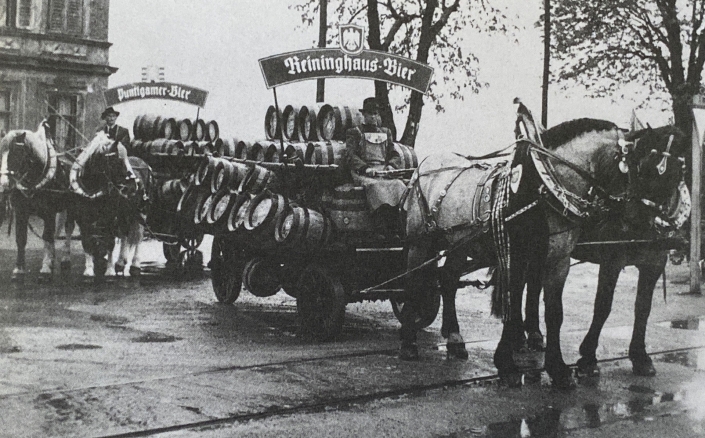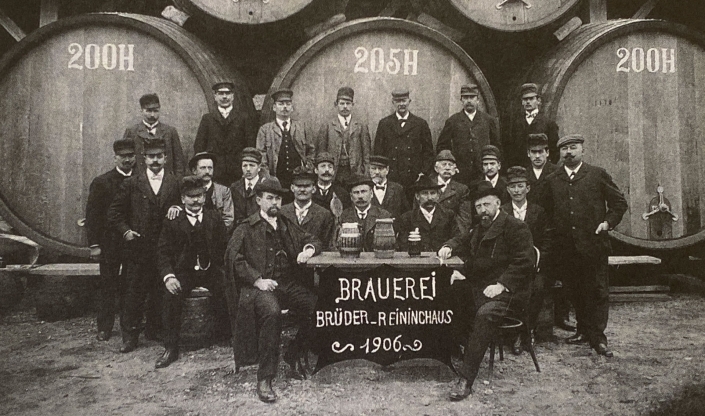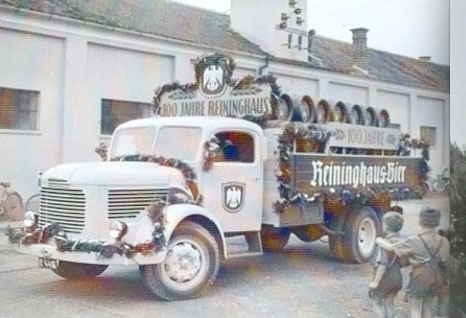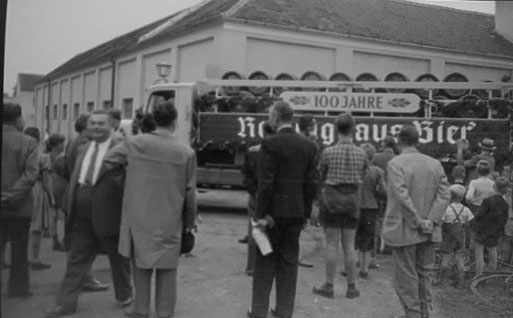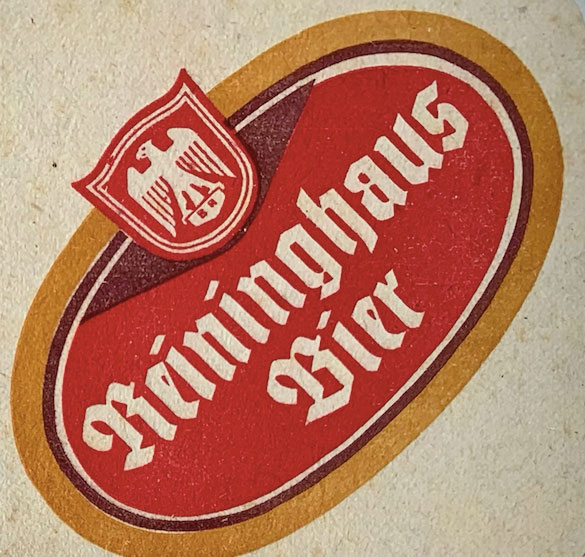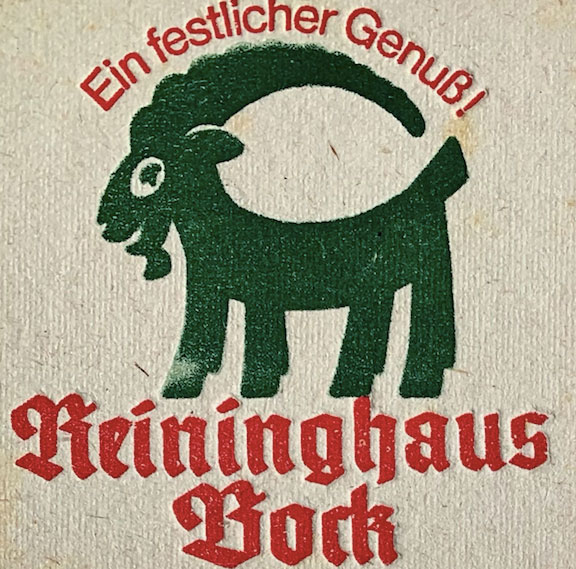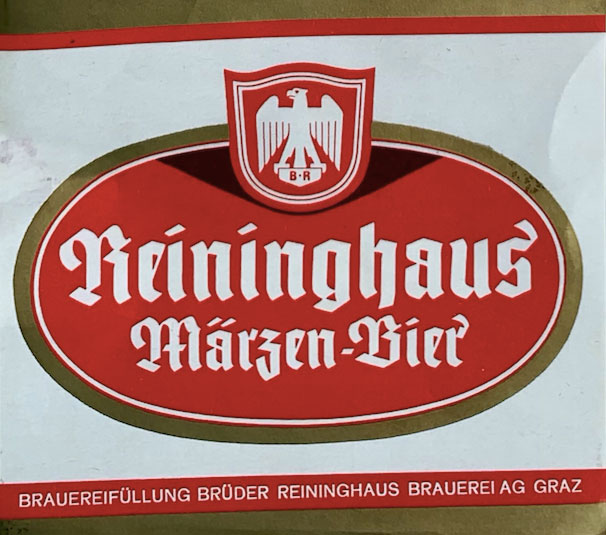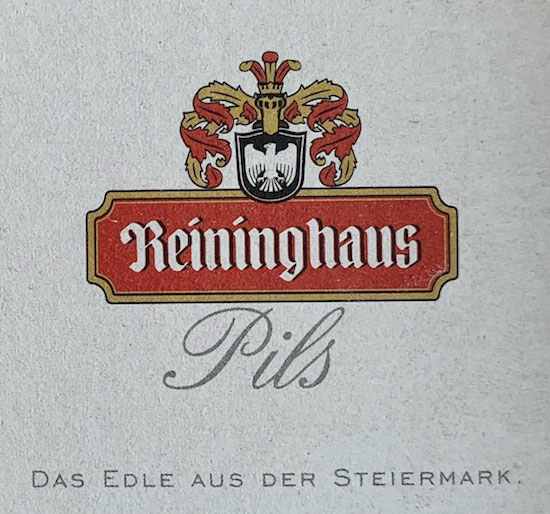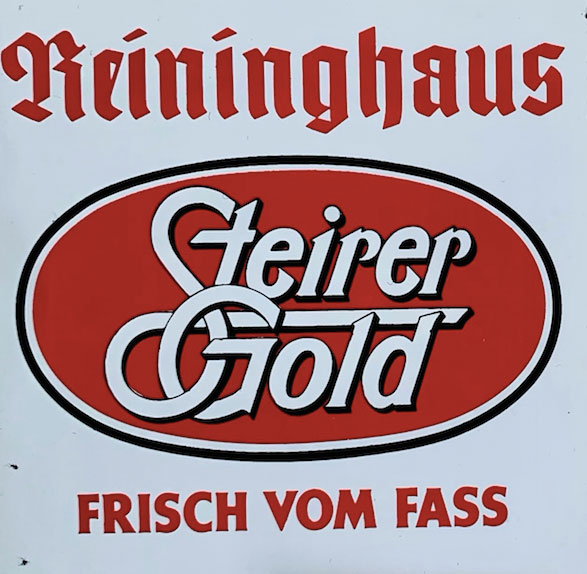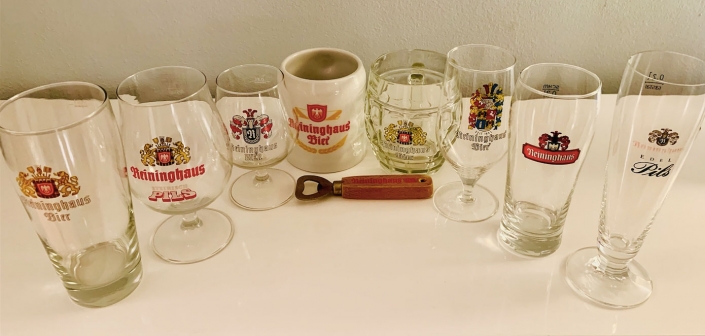The foundation stone for the history of success of the brewery of the Brothers Reininghaus was already laid in their parents’ house, the fertile Isenburg farm (Kierspe in Westphalia). It all started with a potato distillery that consisted of a limekiln and a few barrels. Potatoes turn into spirit, a product that was indispensable for many branches of production that were beginning to develop at that time. Dietrich Reininghaus tried to install a modest brewery at home, Wilhelm set up a corn brandy distillery in Drieberhausen, their brothers Johann Peter and Julius left their native country. A state scholarship gave Johann Peter the opportunity to attend a technical university in Berlin, where he then also turned to studying chemistry. After completing his studies, he already took on positions of responsibility as a company partner in Wroclaw and Berlin. Julius first worked in a factory in Hanover, which was experimenting with a new process for producing compressed yeast and finally came to Vienna via Kassel, Wroclaw and Olomouc. Johann Peter was distinguished by his organizational and entrepreneurial talent, while Julius, a passionate chemical researcher, was primarily scientifically orientated. Both were united by a passion for the process of fermentation by yeast, a product that was most wanted by bakers and still could not be chemically produced. Knowledge that was comparable with gold because it was raised to that value by the great need of people. This passion and the certain hope that the progressing of science and technology of the 19th century would give them the opportunity for implementation, had led them to Adolf Ignaz Mautner in Vienna / St. Marx, whose burning interest was also in the chemical production of compressed yeast.
In Vienna, Johann Peter met Therese, the then seventeen-year-old daughter of Adolf Ignaz, whom he married in 1850. Their honeymoon already took them to Graz, among other places. After a short and unsuccessful attempt to build a pressed yeast factory in Turas near Brno, they acquired the toll house at Steinfeld together with Julius. It was a small brewery on the outskirts of the Graz settlement, which was previously owned by the couple Karl and Johanna Königshofer. It consisted of a residential building, a storage cellar and the brewhouse. The needs of the still small, until then isolated area (the Mur was not passable and the steam locomotive only reached Mürzzuschlag, since the Semmering was still an insurmountable barrier) could be met easily. At that time, 24 master craftsmen, 27 journeymen and 12 apprentices were working in the brewing industry in Graz and the surrounding area. The annual production did not reach more than 44,000 hectolitres. It was thanks to Johann Peters thought-out planning and an iron will that, at a time when Metternich’s laws were still strict, he was soon given state authorization to produce spirit, liqueur, vinegar and pressed yeast. Julius, meanwhile himself married to a Mautner daughter, Emilie, worked as a public partner on the development of the company. In 1855 the company was run as the “Brothers Reininghaus”.
Two steam engines were set up, Reininghaus was the first brewery in Styria to be powered by steam. The land, which was 77 yokes at the time of purchase, was expanded and the brewery was quickly followed by a spirit, vinegar and wheat starch factory, a malt house, a resin oil distillation facility, a smithy and bindery and a plant for the preparation of brewing pitch and wagon grease. And above all, the first compressed yeast factory in Styria was built. As Johann Peter was deeply aware of the dangers that threaten every small company from fluctuations in political nature, he wanted to be largely autonomous with regard to the substances required to manufacture his products. He wanted to remain independent in his pricing and not be subject to price fluctuations. For example, raw materials had to be obtained from their own agricultural property and waste materials from beer production had to be fed to the fattening stock at the same time.
Throughout seven years, the brothers worked continually side by side with their two wives on the construction and expansion of the brewery. Then fate strikes unexpectedly and in 1862 Julius is torn from life after a visit to the London World’s Fair. Badly hit, Johann Peter calls his youngest brother August to his side to take over the management of the farm attached to the brewery. From 1875, he was also supported by Cajetan Herberger as central director, a tireless employee who would remain loyal to the company for a lifetime. Johann Peter, however, could never get over the loss of his beloved brother.
Scientific research made unstoppable progress and its results were constantly checked to ensure that every section of the company was always up to date. The railroad began to link domestic and foreign countries, which intensified competition. Since one wanted to keep the price low in order not to lose the sales markets, production had to be increased by modern facilities in particular. Johann Peter was innovative. He invented a device for cleaning and sealing emptied barrels, as well as a new closure, and acquired patents for both. Another patent, his liquid measuring and control device, was awarded a medal at the Paris World’s Fair in 1867.
In the first 40 years, the area of land around the brewery increased 25 times. Production rose inexorably and all other manufactures were used accordingly. At the beginning of the 1860s, beer production on the Steinfeld was even greater than that of the entire Styrian breweries a decade earlier, despite the wars (1858/59 and 1866). Business already flourished during the war of 1870/71. They exported to Italy, Egypt, Turkey, and later also Greece, Spain, South America, Zanzibar and Massawa. To increase sales, regional inns and restaurants were acquired and weak breweries were closed. So, it happened that beer production increased gigantically a hundredfold between 1857 and 1892.
After 40 years, Steinfeld was then the fifth largest brewery in Austria, employing 47 civil servants and 650 workers. The small brewery had become a vast industry. A barrel factory was attached to the other production facilities and the danger of petroleum was averted by the introduction of electric light. Instead of a yoke of oxen and a horse and cart, a weight-bearing towing track to the Köflach railway was built, ice ponds were laid out on gravel and later Linde’s ice machines were engaged. By feeding with malt sprouts and beer drifters, more milk was obtained than, for instance, beer in the Königshofer brewery. A canal was laid to the Mur. The social commitment, based on the voluntary, warm-hearted charity, on which as well the empire of Adolf Ignaz was built, created workhouses, a factory hospital and an old people’s home as well as a foundation for widows and orphans. When Emperor Franz Joseph visited the “Brothers Reininghaus” in 1883, he admired the modern facilities and in the same year he raised Johann Peter to the nobility.
When the beloved son Gustav died in 1883 at the age of only 32, it was a hard blow not only for the family, but also for the future of the company. Johann Peter then had to find the man who would ensure a continued life for his children and the many subordinates to him. He found him in his son-in-law Eduard Keil von Bündten, who became his colleague and confidant. He continued to work tirelessly, so in 1890, at the age of seventy, he built a pneumatic malt house, whose basic idea of protecting the barley from all weather, with a ventilation and humidification system corresponded to a highly-developed technology even then. When he died in 1901, he left everything to Therese, whom he had designated as sole heiress. A testimony to how much he valued her not only as a wife but also as a business partner. Together with her son-in-law Keil von Bündten, she transformed the company into a public limited company, the “Brüder Reininghaus Aktien-Gesellschaft für Brauerei und Spiritus-Industrie”, of which Moritz Ritter von Schreiner, later a member of the manor house, became president. Eduard Keil von Bündten was Vice President, the other sons-in-law (Dr. Moritz Piffl, Hermann Graf Künigl) and Dr. Leopold Link, later also a member of the manor house, as well as Georg II Anton Ritter Mautner von Markhof and Dir. Anton Gruber, formed the board of directors. Subsequently also son-in-law Edmund Baron Cnobloch. Everyone worked incessantly on expansion and modernization. Gigantic beer cooling rooms, barrel swivel halls, storage cellars and cellars with flue pipes were added to the facility. In the business year 1912/13 beer production was already 441,000 hl, the production of compressed yeast over 200,000 kg, 4000 hl 100% spirit, 2400 hl 10% vinegar, 240,000 kg wagon fat, 225,000 kg brewing pitch and more than 1 million kg animal feed.
The year 1914 came and with it the war. The industries classified as not of importance to the war effort were only allowed to participate in the economic process to a limited extent. State control was no longer based on the wishes of the population, but primarily on the need for food, which led to a ban on alcohol. When beer was allowed to be produced again, there was already a shortage of raw materials. Soon a beer-like drink with substitutes such as cornmeal and bee honey was produced. In the years 1916/17 only 36,031 hl could be emitted, which corresponded to the production of the 1860s. Then the substitutes were also confiscated and a large part of the workers was sent to the front. Those who stayed at home fought for their livelihood and tried to keep production alive with new substitutes. Quantitative production even increased in 1917/18, but at the expense of quality. Sugar beet, beans and millet were used. Only the cultured yeast still covered the own needs. When the war ended in 1918, those industries that were geared towards export could only ship their products to a limited extent, since the surrounding countries had set up protective tariffs. The entire transport system in Central and Western Europe was destroyed, which made transport as good as impossible. Reininghaus also had to find new sales markets. New depots were set up in Fiume and the neighbouring area, so the high tariff rates could be overcome and the beer could be sold to other countries.
At that time, an eagle was added to the company coat of arms of the two crossed swords with the initials B. R. as a symbol of advancement and strength to remind that strong men had withstood a terrible war.
As with all post-war products, the company was confronted with a crisis of confidence in their product, since for years the population had been offered a replacement that made the real, typical beer almost forgotten. The Board of Directors of the “Brothers Reininghaus-AG” appointed Dr. Peter von Reininghaus, the then 24-year-old son of Johann Dietrich, as an authorized signatory. Based on the experience and knowledge of his two teachers, Georg II Anton Mautner von Markhof and President Wilhelm Kux, he started his work, which was to last well over fifty years. First of all, the “Brothers Reininghaus-AG” had to overcome the war and post-war raw material worries and compensate for the lost markets abroad through domestic sales – not only for beer but also for other products such as spirits, yeast and vinegar. With increasing consolidation and the further growth of the company, Peter Reininghaus also succeeded in building a bridge to the second large brewery in the country, the “Gösser Brauerei-AG”. He took advantage of the opportunity to buy a considerable block of shares that had previously been in foreign hands. That purchase was the basis for the “Styrian brewing industry”. However, the planned effects were not to be seen until after 1945, as developments initially ran in opposite directions after the Annexation of Austria to the Third Reich. On March 13, Peter Reininghaus was arrested and expelled from the country without further trial. That was justified with his attitude incompatible with National Socialism. He finally emigrated via Brussels and Lausanne to Trieste and Abbazia, where immediately after July 20, 1944, he received a summons from the Gestapo. He refused to obey and until the end of the war he hid in cellars and attics. During the war years the brewery was subordinated to the son of the general manager, Carl E. Neweklowsky. The name Reininghaus was put last when on March 24, 1944 the “Brothers Reininghaus Aktien-Gesellschaft für Brauerei und Spiritus-Industrie” faced a forced merger with the “Ersten Grazer Actien-Brauerei” formerly known as “Franz Schreiner & Sons” into the “Grazer Brauerei Aktiengesellschaft Puntigam-Reininghaus”. The question of the merger had already been topical in the thirties, when the Puntigamer company ran into existential difficulties due to wrong investment and sales policy decisions. Despite massive personal and political pressure, Peter Reininghaus was able to successfully oppose it at the time, since Reininghaus’ earnings and liquidity were more important to him economically than the temptation to increase production in hectolitres. The current merger brought about extensive changes, among other things. Among other things a fully automatic malt house was set up.
In 1945, when Peter Reininghaus returned home for the first time in seven years, he was overcome by resignation in view of the human and material heap of rubble that the war had left behind. As Steinfeld had been razed to the ground by air raids, he decided to merge the breweries in Puntigam in order to enable a cost-saving reconstruction. He stuck to the traditional brewing recipes, beer brands and sales areas of Reininghaus and Puntigam. For the Gösser Brewery, which got into economic and political difficulties in 1945, he achieved a competent public administration in long-winded negotiations and was thus able to maintain its independence. In 1949 the expansion of a new spirit factory was completed and spirit, quality liqueurs, nutritional yeast and vinegar were produced on a large scale.
In 1953, the cultivation of hops began in the Leutschacher area of southern Styria. That brought the borderland farmers an additional opportunity to earn a living and “the Styrian brewing industry was rooted in the home soil”. From 1957 Peter Reininghaus coordinated the breweries in Styria and Carinthia with the help of the “Alpine Working Group for Economic Policy” which he had set up. That community, which in the following years also dealt intensively with questions of European integration, became the expression of an Austria-wide exemplary market organization for a subsection of the brewing industry comprising more than two million hectolitres. In 1970, a cooperation agreement was also concluded between the Styrian brewing industry and the “Schwechater Brau AG”, which resulted in the most important association of independent brewing companies in Austria.
When Peter Reininghaus “The President” died in January 1973, he was followed by his son Dkfm. Peter, who would lead the company for the next decade. In 1977 the parent companies, the “Brüder Reininghaus Brauerei-AG” and the “Gösser Brauerei-AG”, founded the “Steirerbrau AG”, which was taken over in 1992 by a competitor, the “Brau-Beteiligungs-Aktiengesellschaft (BBAG)”. From the perspective of the BBAG, the 33 percent stake in rival Steirerbrau that was sold by the Creditanstalt was decisive. That gave the Brau AG a foot in the door of the second largest beer group in Austria, which also included the “Göss” and the ”Puntigam-Reininghaus” breweries. Despite strong protests from small shareholders, the “Steirerbrau” was swallowed in its entirety by the “BBAG”. The Austrian breweries were finally merged into “Brau Union Österreich AG”, which has been part of the “Heineken Group” since 2003. Reininghaus suffered the same fate as many family-run businesses did in the 1990s, and at the same time it shows how significantly the past has shaped the present and how strongly a brand like “Reininghaus” is supported by tradition.


